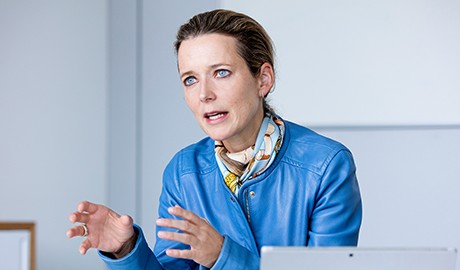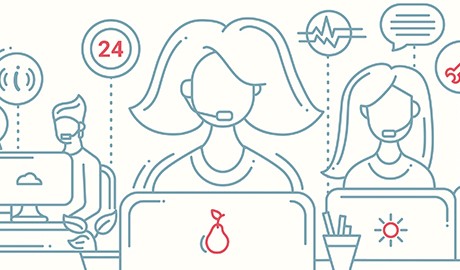Work Smart Coaching
Work Smart stands and falls with the corporate culture
The working world, value systems and what is expected of employers are changing. Petra Schmidhalter, Work Smart Coach at Swisscom, explains the significance of new, smart working methods.
Published in the Handelszeitung and Bilanz, December 2017
Ms Schmidhalter, what consequences does the unstoppable progression of networks have for our work?
Employees are flexible and self-determining as never before. Networks enable collaborations without limits – regardless of time, location or device. However, in order for employees to be able to use the new solutions gainfully, they must learn new skills and practices and break with old patterns. The organisation must take on a great deal of responsibility. Because networks can also be very demanding. So we have to learn to deal with networks and structure them.
And what does this mean for the ICT systems?
New technologies, when used correctly, help us to work more efficiently. However, along with the right tools we also need the right methodology and a suitable corporate culture. Because despite the mass of technology, each solution is only as good as the person who is using it.
So what does the state-of-the-art workplace look like?
There’s so such thing as “the” state-of-the-art workplace. The important thing is for the workplace to adapt to the roles and needs of the users. Ideally, employees are able to select their own working location and times freely: For example, for “deep work” they stay in their home office so as not to be distracted. To save themselves the train journey and be creative, they go to the co-working space around the corner, and for team meetings they head to the office. Anyone rethinking their office cannot ignore the concept of “activity-based working”, which is when I select the workplace based on the work content, because I want it to enable me to perform my activities well.
What happens when there are no more fixed locations and times?
It’s not the case the all employees are going to be able and willing to work flexibly in the future. Rather, the opportunity should be there for those who want it. Certain boundaries are however set down, on the customer front, for example. But it is interesting that, in general, we’re seeing a tendency to return to the office. Agile forms of working and organisation in particular thrive on physical communication. Therefore, companies should maintain a flexible office concept in their buildings in order to keep their working environment versatile and also suitable for different activities.
What are the effects of these new, flexible working methods?
Organisations are developing from “storing organisations” where data and documents are only accessible to limited user groups into “sharing organisations” where everything is saved centrally and is accessible to everyone. The new technologies are shaping these new forms of collaboration to a high degree. And the type of collaboration in turn shapes the corporate culture, for instance our understanding of leadership.
So the style of leadership is also under scrutiny?
Yes, the role of leadership is changing completely. In the 20th century, the boss’s role was mainly a supervisory one. The work was repetitive and could be planned and controlled. Today’s complex systems require managers who inspire and who share a jointly defined vision with the teams. Thus, the supervisor should assume the role of the coach, creating the general conditions that enable employees to realise their full potential.

Newsletter
Would you like to regularly receive interesting articles and whitepapers on current ICT topics?
More on the topic


